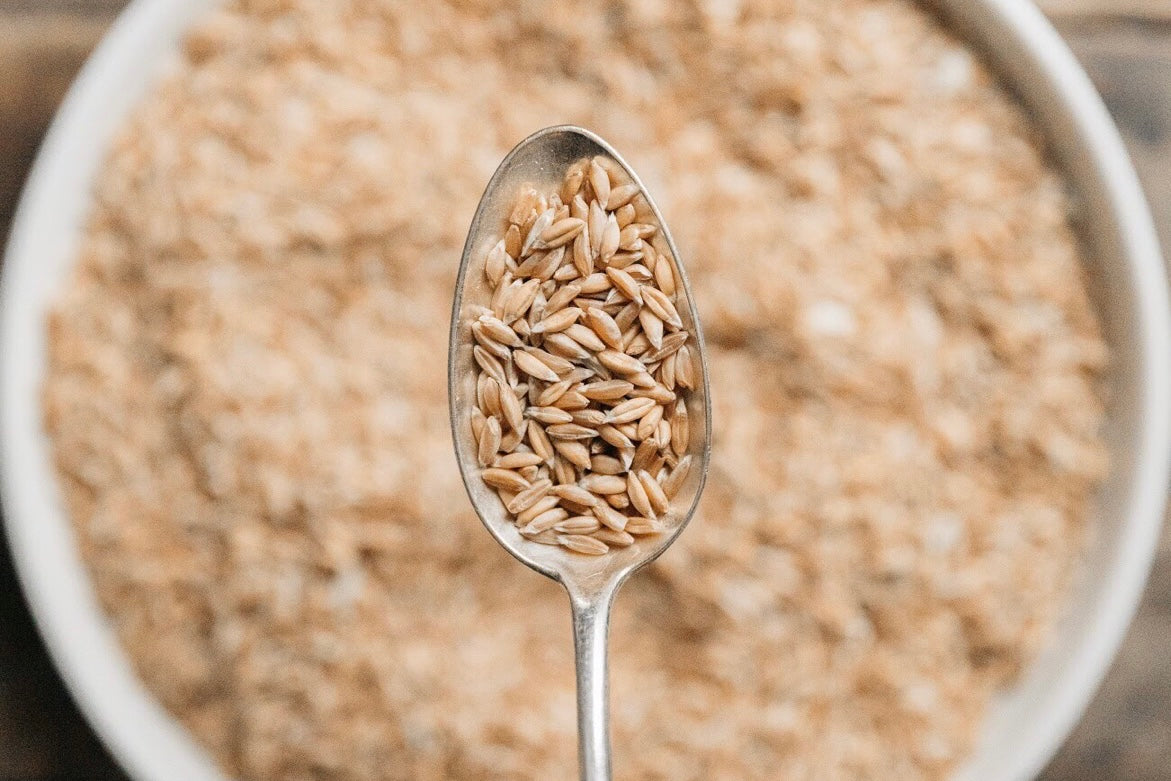When it comes to flour, it's no secret we are all about using it freshly milled. Freshly milled flour tastes better and is better for you, it's that simple. For those looking to incorporate more whole grains into their diets, using whole grain flour will go a long way to increasing your daily fiber goals.
Here's how to get the most out of our whole grain flours, or how to make easy substitutions in some of your favourite recipes.Tips for Using Whole Grain Flour
Whole grain flours can easily be substituted for sifted flours in most recipes fairly easily. We've created this guide to help you make the most of the flours that you have in your home.
Start by substituting half the amount of flour for whole grain and go up from there. If you can do this it's the easiest way to ensure that a recipe will turn out as desired. The easiest recipes to completely substitute whole grain flours in for sifted flours are recipes for cookies, scones, pancakes, and waffles. The texture may be slightly different (more granular), the baking will taste nuttier, and might have more of a chew. In a lot of cases it's even tastier this way!
Another great tip is to let your cookies sit in the fridge or freezer overnight before baking. This helps to soften the bran before baking to make the cookie texture softer.
Quick Breads (banana bread, muffins)
A good rule of thumb to follow for quick breads is to use 1 teaspoon of baking soda for each cup of whole grain flour. Also, to improve texture and crumb, it's beneficial to use buttermilk as the liquid in the recipe as this helps to tenderize the bran in the flour, yielding a softer result.
Yeasted Breads (any recipes using yeast)
If substituting half the amount of sifted flour for whole wheat flour, generally speaking, no changes need to be made to a yeasted bread recipe. If substituting 100% whole grain flour for the sifted flour, begin with adding an extra 2 teaspoons of liquid per one cup of flour. You may need to add more depending on your recipe, but that is a good place to start.
Because whole grain flours have bran which can tend to tear at the gluten strands, we recommend that you mix the dough just until it comes together, and then let the dough rest for 25 - 30 minutes before kneading. This allows the bran to hydrate, which will make it softer and less likely to tear the gluten strands that you develop through kneading. The more whole grain in a recipe the faster that your recipe will proof. Pay attention to your doughs and keep an eye on them!
Sourdough Bread
Like yeasted breads, your sourdough loaves will proof faster. We recommend that you do one less fold than usual, and if your kitchen is warm it's a good idea to shorten the time between folds. Pay attention to your loaf and be flexible. As with yeasted breads, you may need to increase the hydration.
When using whole grain flours, a lot of bakers have found that it is helpful to do the autolyse just with the flour and water, omitting the sourdough starter until the salt is added. This helps to hydrate the bran, which softens it, without beginning any proofing. Because the starter has not been added, this autolyse can be as short as one hour or as long as overnight.
For any further clarification, always feel free to contact us. We are here to ensure you get the most out of our flours. Happy baking!


